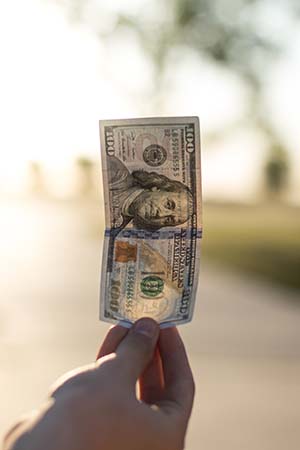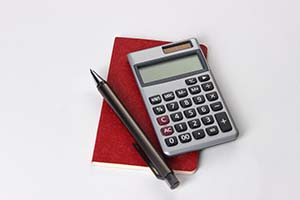How To Calculate the Intrinsic Value of a Stock (With an Example)
In this article, we will go through how to calculate the intrinsic value of a stock. According to Warren Buffett, the most important investment concept is the margin of safety. This method is used by well-known investors, such as Charlie Munger, Benjamin Graham, Peter Lynch, Seth Klarman, and others.
I’ve noticed that many people have heard of the margin of safety, but don’t know how to calculate it, neither do they know how to calculate the intrinsic value. Intrinsic value is actually needed to know what our margin of safety is.
To fix this, by the end of this article, you should learn how to calculate a company’s intrinsic value. As a result, you will also be able to calculate the margin of safety of any company.
Calculating Intrinsic Value of a Stock
The intrinsic value or fair value of a stock as some call it is the present value of all future cash receipts. To calculate it we need to know how much money the specific company will make in the future. And how much those cash receipts would be worth today.
The first thing we need to look at is the amount of cash the company makes that year. This is called owners earnings. Below is the formula to calculate owners earnings:
Owners’ Earnings = Operating Cash Flow – Maintenance Capital Expenditure
The operating cash flow measures the amount of money that a company generates through normal operations. While maintenance capital expenditure is the amount of cash expenditures for the construction of new capital assets or the replacement, improvement, or expansion of existing capital assets.
Since it is more difficult to find the amount of maintenance capital expenditure in the financial statements, many investors do a simpler variant and take the total capital expenditure. This includes all the costs necessary for the growth of the company. Also, for simplicity, instead of owners’ earnings, investors tend to take free cash flow. This approach will save you time when searching for data, but it is not so accurate.
In this simpler case, the formula looks like this:
Free Cash Flow = Operating Cash Flow – Total Capital Expenditure
Example of Calculating Intrinsic Value of a Stock
Imagine now that you want to buy a coffee shop in your local place. The first thing you would like to know is how much money that coffee shop generates each year.

The table below shows the free cash flow that this coffee shop is expected to earn. You can notice that free cash flow grows by 15% every year.
| Year | Free Cash Flow |
| 2021 | USD 15,000 |
| 2022 | USD 17,250 |
| 2023 | USD 19,838 |
| 2024 | USD 22,813 |
| 2025 | USD 26,235 |
| 2026 | USD 30,170 |
| 2027 | USD 34,696 |
| 2028 | USD 39,900 |
| 2029 | USD 45,885 |
| 2030 | USD 52,768 |
| TV (10x FCF) | USD 527,681 |
At the end of the table, you can notice the terminal value – TV (10x FCF) which is the estimated value of stock beyond the explicit forecast period. The method we used when calculating TV was the exit multiple method, and the financial metric we used was 10x FCF in 2030.
If we were, to sum up, free cash flow for all 10 years, would that be the price of today’s business? Well, It wouldn’t, because of the time value of money. The value of the money we will receive in a few years will not be worth to us as it is today. Simply put, USD 100 is worth more to us today than USD 100 in 10 years. This is because today’s USD 100 can be invested in something and thus gain in value over time.
Discounted Cash Flow
The next thing we will do is calculate the present value of free cash flow. To do this we will use discounted cash flow. We will use a 20% discount rate because we want to get that much return with our investment.
To calculate discounted cash flow use the following formula for each year:
CFt /( 1 +r)^t
Using the above formula, we calculated the discounted cash flow by years as follows in the table below.
| Year | Free Cash Flow | Discounted Cash Flow |
| 2021 | USD 15,000 | USD 12,500 |
| 2022 | USD 17,250 | USD 11,979 |
| 2023 | USD 19,838 | USD 11,480 |
| 2024 | USD 22,813 | USD 11,002 |
| 2025 | USD 26,235 | USD 10,543 |
| 2026 | USD 30,170 | USD 10,104 |
| 2027 | USD 34,696 | USD 9,683 |
| 2028 | USD 39,900 | USD 9,280 |
| 2029 | USD 45,885 | USD 8,893 |
| 2030 | USD 52,768 | USD 8,522 |
| TV (10x FCF) | USD 527,681 | USD 85,223 |
Intrinsic Value of a Stock
The total value of the present value of money (sum of discounted cash flow) is USD 189,209. This is what is called the intrinsic value of the coffee shop.
Therefore, if we manage to negotiate this price with the coffee shop owners, we can expect an annual return of 20% every year for the next 10 years. In case we pay more than USD 189,209, we will achieve a lower yield. On the other hand, for a higher yield, we must agree on a lower price than the one calculated with discounted cash flow.
Market Value of a Stock
The stock market each and every day gives us the price of the businesses. We can look at market capitalization that tells us how much the market is willing to sell that business for.
The market value of a stock is prone to larger oscillations, and we can take advantage of that. We can do this by calculating the intrinsic value of a stock and looking at the market value of a stock. When a good opportunity to buy arises, that is, when the market price of a stock is low enough, we might consider buying that stock.

Margin of Safety
Calculating intrinsic value involves a lot of educated guesswork. Therefore, the risk is always present when assessing intrinsic value. Also, there are factors that even the most experienced analysts cannot predict such as economic disasters, wars, etc. As a result, we can’t rely 100% on our estimate of intrinsic value.
To protect our investment from the risks that may arise from a wrong estimate of intrinsic value and factors that we cannot influence, we need to use the margin of safety.
“A margin of safety is necessary because valuation is an imprecise art, the future is unpredictable, and investors are human and do make mistakes”
– Seth Klarman
How much the margin of safety should be, depend mostly on you. More experienced investors generally use a 10% to 30% margin of safety. If you are a new investor just starting out or investing in some riskier companies, you can use a 50% margin of safety.
However, it might be very difficult to find a business that has a 50% margin of safety. But if you manage to find it, your predictions can be greatly wrong and you will still have a good chance of making money.
In our example, I choose a margin of safety of 20% as you can see on the graph. Red dots indicate the time below which market value has fallen below our margin of safety and is an opportunity to buy a company.

Whichever margin of safety rate you choose, be patient and wait for the price of the company to reach your desired level.
Conclusion
The margin of safety might be the most important concept of investing. To calculate the margin of safety, we need to know the intrinsic value of a stock. We should personally choose the rate of margin of safety given the risk of a stock and the experience we have in investing.
After calculating the intrinsic value and choosing our margin of safety rate, we look at the market price of a stock until there is a favorable opportunity to buy. If you are interested in a more detailed analysis and calculations such as WACC, working capital and growth rate see the article on how to calculate the intrinsic value using DCF.

